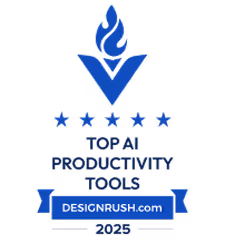Supply Chain
AI-Powered Procurement Savings: How to Reduce Costs With Smart Consolidation

Procurement teams at enterprise organizations face a persistent challenge: the data they need to optimize spending and supplier relationships exists in their systems, but extracting actionable insights requires days of manual analysis. By the time procurement analysts complete their spreadsheet-based reviews and generate reports, market conditions have shifted and opportunities have been missed.
Lumi AI addresses this analytics bottleneck through conversational intelligence that transforms procurement from a reactive function into a strategic advantage. Instead of waiting days for data teams to analyze supplier performance or consolidation opportunities, procurement professionals can ask complex questions in plain English and receive comprehensive answers in seconds.
This guide explores how Lumi AI's enterprise analytics platform specifically addresses procurement challenges, enabling organizations to accelerate decision-making while uncovering substantial cost reduction opportunities through data-driven supplier optimization.
What Procurement Analytics Gaps Does Lumi AI Address?
Traditional procurement operations rely on manual processes that create systematic inefficiencies and blind spots. These limitations compound over time, preventing organizations from optimizing their supplier relationships and spend management effectively.
The Data Access Bottleneck
Most procurement teams must submit ad hoc requests to busy data analysts or IT teams to answer basic questions about supplier performance, spending patterns, or consolidation opportunities. This process typically takes days or weeks, during which procurement conditions can change significantly.
Even when procurement professionals have access to business intelligence dashboards, these tools require technical expertise to generate meaningful insights. Questions like "Which suppliers offer the best payment terms for our top spending categories?" or "How much could we save by consolidating purchases with our lowest-cost vendors?" often remain unanswered because they require complex analysis across multiple data sources.
Fragmented Supplier Intelligence
Enterprise organizations typically manage relationships with hundreds or thousands of suppliers across different business units, geographic regions, and product categories. This complexity makes it nearly impossible to manually identify consolidation opportunities or negotiate optimal terms based on total organizational spending.
Manual analysis cannot efficiently process the relationships between suppliers, categories, spending patterns, and contract terms. Teams miss opportunities for volume discounts, fail to achieve preferred customer status, and overlook strategic partnership possibilities that could deliver both cost savings and operational improvements.
Reactive Decision Making
Without real-time access to procurement data, teams make decisions based on outdated information or incomplete analysis. This reactive approach leads to suboptimal supplier selection, missed early payment discounts, and delayed responses to supply chain disruptions.
Lumi AI transforms this reactive model into proactive procurement management through conversational analytics that provide instant access to complex supplier and spending intelligence.
How Lumi AI's Conversational Analytics Works for Procurement
Lumi AI employs agentic AI workflow specifically designed for enterprise analytics, enabling procurement professionals to interact with their data using natural language queries instead of traditional dashboard navigation or report requests.
Natural Language Procurement Queries
Procurement teams can ask sophisticated questions directly to the AI system using business terminology and context. For example, asking "What procurement savings can we achieve by consolidating with the lowest-cost vendors across our spending categories?" triggers the AI to analyze purchase data across categories, calculate potential savings from supplier consolidation, and provide specific recommendations with supporting data.
The AI automatically accesses relevant data sources through the knowledge base, which serves as a repository of context about your organization's data schema, structure, and business-specific terminology. This knowledge base enables the AI to understand where supplier information lives, how spend categories are defined in your systems, and what business rules apply to procurement decisions. The system performs calculations and presents results in formats that support immediate decision-making.
Transparent AI Decision Process
Unlike black-box analytics tools, Lumi AI provides complete transparency into how each procurement insight was generated. Users can examine the underlying SQL code, review step-by-step agentic workflow execution, and trace the analytical reasoning behind every recommendation.
This transparency builds trust in AI-generated procurement recommendations and enables procurement professionals to validate insights against their operational knowledge. The system shows the exact queries executed against supplier databases, the sequential workflow steps performed by AI agents, and can request human verification at critical decision points, implementing a modern human-in-the-loop AI workflow architecture that ensures decision-makers understand and validate the foundation of their strategic choices.
Multi-Agent Analytical Workflow
Lumi AI's architecture employs specialized AI agents that work together to process complex procurement questions. When a user asks about supplier consolidation opportunities, different agents handle query interpretation, data retrieval, analysis execution, and result presentation.
This agentic approach enables the system to handle exceptions, ask clarifying questions when queries are ambiguous, and provide comprehensive analysis that mimics the workflow of experienced procurement analysts. The AI can break down complex questions into multiple analytical steps and synthesize results into actionable recommendations.
Documented Results: Real-World Procurement Transformations
Organizations implementing Lumi AI for procurement analytics have achieved measurable improvements in both analysis speed and cost optimization outcomes.
A real-world implementation demonstrates these capabilities in action. A textile manufacturer managing approximately 20,000 raw materials through their SAP ERP system used Lumi AI to identify price variances for identical materials across different suppliers. Using Lumi's conversational interface, the procurement team implemented a two-step analysis: first identifying top-purchased items sourced from multiple suppliers, then analyzing average unit costs by supplier to find optimization opportunities.
The result was a 38% reduction in raw material procurement costs through strategic supplier consolidation. The speed of this analysis enables procurement teams to act on time-sensitive opportunities, such as contract renewal negotiations or supplier consolidation initiatives, before market conditions change.
Enterprise Security and Integration Requirements
Lumi AI's architecture addresses the security and integration challenges that are critical for procurement analytics in large organizations.
Secure In-Network Data Processing
All procurement data analysis occurs within the client's own network infrastructure, ensuring sensitive supplier information, contract terms, and spending data never leave the controlled environment. Lumi AI deploys through secure gateways or direct connectors that process queries against internal databases without external data transmission.
This architecture enables organizations to analyze confidential procurement information while maintaining compliance with data residency requirements and internal security policies. The system provides enterprise-grade security controls including encryption, access management, and audit trail capabilities.
Native ERP Integration
Lumi AI offers pre-built connectors for major enterprise systems commonly used in procurement operations. These native integrations provide real-time access to supplier data, purchase orders, contracts, and spending information without requiring complex ETL processes or data migration.
The platform supports both cloud and on-premises deployments, enabling organizations to maintain their existing IT architecture while adding conversational analytics capabilities. Integration flexibility ensures rapid implementation without compromising security or performance requirements.
Role-Based Access Controls
Enterprise deployments require sophisticated permission systems that control access to sensitive procurement data based on user roles, business units, and supplier relationships. Lumi AI provides granular access controls that ensure users only see data relevant to their responsibilities and authority levels.
The security framework supports complex organizational structures including multi-location operations, vendor partnerships, and regulatory compliance requirements across different geographic regions.
Lumi AI vs. Traditional Procurement Analytics
Lumi AI represents a fundamental shift from traditional business intelligence approaches that create barriers to procurement data access and insight generation.
Conversational Interface Limits Training Needed
Traditional procurement analytics tools require extensive training on dashboard navigation, report generation, and data analysis techniques. Many procurement professionals never fully adopt these tools due to complexity and time constraints.
Lumi AI's natural language interface enables immediate productivity without extensive technical skill sets (writing SQL or Python code). Procurement managers can ask questions using familiar business terminology and receive comprehensive answers with supporting data and visualizations.
Real-Time Analysis Replaces Static Reports
Legacy BI systems typically generate static reports on predetermined schedules, often presenting outdated information that doesn't reflect current procurement conditions. Even when reports are available, procurement teams must export data to Excel for manual analysis, adding days to the decision-making process. Making changes to these reports requires IT support and development time.
Lumi AI provides dynamic analysis that reflects current data conditions and can be modified instantly based on changing business requirements. Users can explore different scenarios, drill down into specific supplier performance metrics, or analyze seasonal spending patterns without technical assistance.
Transparency Builds Trust in AI Recommendations
Many analytics platforms function as black boxes that provide recommendations without explaining the underlying reasoning. This opacity creates hesitation among procurement professionals who need to understand the basis for strategic decisions.
Lumi AI is built with the intention to build of trust through transparency into analytical processes, including the specific data sources, calculation methods, and logical steps used to generate each insight. This visibility enables procurement professionals to validate recommendations and confidently act on AI-generated insights.
Ready to get started?
Schedule a demo to see how Lumi AI can accelerate your procurement analytics and enable data-driven supplier optimization strategies.
Frequently Asked Questions About Lumi AI for Procurement
How quickly can Lumi AI be implemented for procurement analytics?
Lumi AI implementations typically have a time to value within two weeks from project start to delivering procurement insights. Lumi handles most integration complexity, requiring less than three hours of effort from the client's IT team. This rapid white glove implementation deployment enables organizations to start generating value immediately rather than waiting months for traditional BI implementations.
What procurement data sources can Lumi AI analyze?
The platform provides native integrations with major enterprise systems including SAP, Oracle, Microsoft Dynamics, and leading procurement platforms. It can analyze data from ERP systems, procurement cards, contract databases, supplier performance systems, and financial reporting tools without requiring data migration or complex ETL processes.
How does Lumi AI protect sensitive supplier and contract information?
All data processing occurs within the client's own network infrastructure using secure gateways or direct database connections. Sensitive procurement information never leaves the controlled environment, and the platform provides enterprise-grade security controls including encryption, role-based access management, and comprehensive audit trails.
Can Lumi AI help identify specific cost reduction opportunities?
Yes, the platform can analyze spending patterns across suppliers and categories to identify consolidation opportunities, contract optimization potential, and supplier performance improvements. In documented cases, organizations have identified significant procurement cost reduction opportunities in specific categories through AI-powered analysis.
How does Lumi AI compare to existing procurement BI dashboards?
Unlike static dashboards that require navigation and technical knowledge, Lumi AI enables users to ask complex questions in plain English and receive comprehensive answers with supporting data. The conversational interface eliminates training requirements while providing transparency into analytical reasoning that traditional BI tools typically obscure.
Related articles
The New Standard for Enterprise Analytics
Make Better, Faster Decisions.




